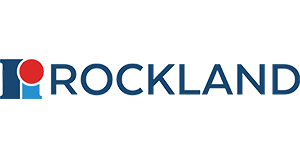p38 Antibody
p38 Antibody
SKU
ROC100-401-G26
Packaging Unit
100 µL
Manufacturer
Rockland
Availability:
loading...
Price is loading...
Application Note: Anti-p38 Antibody has been tested in WB, IP, IF, and IHC. Expect a band approximately ~43kDa protein corresponding to the molecular mass of p38 on SDS PAGE immunoblots. Specific conditions for reactivity should be optimized by the end user.
Concentration Value: 1mg/ml
Immunohistochemistry Dilution: User Optimized
Immunoprecipitation Dilution: 1:250
Western Blot Dilution: 1:1000
General Disclaimer Note: This product is for research use only and is not intended for therapeutic or diagnostic applications. Please contact a technical service representative for more information. All products of animal origin manufactured by Rockland Immunochemicals are derived from starting materials of North American origin. Collection was performed in United States Department of Agriculture (USDA) inspected facilities and all materials have been inspected and certified to be free of disease and suitable for exportation. All properties listed are typical characteristics and are not specifications. All suggestions and data are offered in good faith but without guarantee as conditions and methods of use of our products are beyond our control. All claims must be made within 30 days following the date of delivery. The prospective user must determine the suitability of our materials before adopting them on a commercial scale. Suggested uses of our products are not recommendations to use our products in violation of any patent or as a license under any patent of Rockland Immunochemicals, Inc. If you require a commercial license to use this material and do not have one, then return this material, unopened to: Rockland Inc., P.O. BOX 5199, Limerick, Pennsylvania, USA.
Immunogen: p38 Antibody was produced from whole rabbit serum prepared by repeated immunizations raised against a 20 residue synthetic peptide based on the human p38 with the cysteine residue added and coupled to KLH.
Physical State: Liquid (sterile filtered)
Purity and Specificity: Anti-p38 Antibody was prepared from monospecific antiserum by delipidation and defibrination. A BLAST analysis was used to suggest cross-reactivity with p38 from Human, Monkey, Mouse, Rat, Bovine, Rabbit, Pig, Canine, Hamster, Chicken, Sheep, and Guinea pig based on 100% homology with the immunizing sequence. Cross-reactivity with p38 from other sources has not been determined. Cell signaling research.
Background: The MAPK (mitogen activated protein kinase) comprises a family of ubiquitous praline-directed, protein-serine/threonine kinases which signal transduction pathways that control intracellular events including acute responses to hormones and major developmental changes in organisms. This super family consists of stress activated protein kinases (SAPKs); extracellular signal-regulated kinases (ERKs); and p38 kinases, each of which forms a separate pathway. The kinase members that populate each pathway are sequentially activated by phosphorylation. Upon activation, p38 MAPK/SAPK2α translocates into the nucleus where it phosphorylates one or more nuclear substrates, effecting transcriptional changes and other cellular processes involved in cell growth, division, differentiation, inflammation, and death. Specifically p38 always acts as a pro-apoptotic factor with its activation leading to the release of cytochrome c from mitochondria and cleavage of caspase 3 and its downstream effector, PARP. p38 MAPK is activated by a variety of chemical stress inducers including hydrogen peroxide, heavy metals, anisomycin, sodium salicylate, LPS, and biological stress signals such as tumor necrosis factor, interleukin-1, ionizing and UV irradiation, hyperosmotic stress and chemotherapeutic drugs. As a result, p38 alpha has been widely validated as a target for inflammatory disease including rheumatoid arthritis, COPD and psoriasis and has also been implicated in cancer, CNS and diabetes.
Low Endotoxin: No
Concentration Value: 1mg/ml
Immunohistochemistry Dilution: User Optimized
Immunoprecipitation Dilution: 1:250
Western Blot Dilution: 1:1000
General Disclaimer Note: This product is for research use only and is not intended for therapeutic or diagnostic applications. Please contact a technical service representative for more information. All products of animal origin manufactured by Rockland Immunochemicals are derived from starting materials of North American origin. Collection was performed in United States Department of Agriculture (USDA) inspected facilities and all materials have been inspected and certified to be free of disease and suitable for exportation. All properties listed are typical characteristics and are not specifications. All suggestions and data are offered in good faith but without guarantee as conditions and methods of use of our products are beyond our control. All claims must be made within 30 days following the date of delivery. The prospective user must determine the suitability of our materials before adopting them on a commercial scale. Suggested uses of our products are not recommendations to use our products in violation of any patent or as a license under any patent of Rockland Immunochemicals, Inc. If you require a commercial license to use this material and do not have one, then return this material, unopened to: Rockland Inc., P.O. BOX 5199, Limerick, Pennsylvania, USA.
Immunogen: p38 Antibody was produced from whole rabbit serum prepared by repeated immunizations raised against a 20 residue synthetic peptide based on the human p38 with the cysteine residue added and coupled to KLH.
Physical State: Liquid (sterile filtered)
Purity and Specificity: Anti-p38 Antibody was prepared from monospecific antiserum by delipidation and defibrination. A BLAST analysis was used to suggest cross-reactivity with p38 from Human, Monkey, Mouse, Rat, Bovine, Rabbit, Pig, Canine, Hamster, Chicken, Sheep, and Guinea pig based on 100% homology with the immunizing sequence. Cross-reactivity with p38 from other sources has not been determined. Cell signaling research.
Background: The MAPK (mitogen activated protein kinase) comprises a family of ubiquitous praline-directed, protein-serine/threonine kinases which signal transduction pathways that control intracellular events including acute responses to hormones and major developmental changes in organisms. This super family consists of stress activated protein kinases (SAPKs); extracellular signal-regulated kinases (ERKs); and p38 kinases, each of which forms a separate pathway. The kinase members that populate each pathway are sequentially activated by phosphorylation. Upon activation, p38 MAPK/SAPK2α translocates into the nucleus where it phosphorylates one or more nuclear substrates, effecting transcriptional changes and other cellular processes involved in cell growth, division, differentiation, inflammation, and death. Specifically p38 always acts as a pro-apoptotic factor with its activation leading to the release of cytochrome c from mitochondria and cleavage of caspase 3 and its downstream effector, PARP. p38 MAPK is activated by a variety of chemical stress inducers including hydrogen peroxide, heavy metals, anisomycin, sodium salicylate, LPS, and biological stress signals such as tumor necrosis factor, interleukin-1, ionizing and UV irradiation, hyperosmotic stress and chemotherapeutic drugs. As a result, p38 alpha has been widely validated as a target for inflammatory disease including rheumatoid arthritis, COPD and psoriasis and has also been implicated in cancer, CNS and diabetes.
Low Endotoxin: No
| SKU | ROC100-401-G26 |
|---|---|
| Manufacturer | Rockland |
| Manufacturer SKU | 100-401-G26 |
| Package Unit | 100 µL |
| Quantity Unit | STK |
| Reactivity | Human, Mouse (Murine), Rat (Rattus), Pig (Porcine), Sheep (Ovine), Monkey (Primate), Rabbit, Dog (Canine), Guinea Pig, Cow (Bovine), Hamster, Chicken |
| Clonality | Polyclonal |
| Application | Immunofluorescence, Immunoprecipitation, Western Blotting, Immunohistochemistry |
| Isotype | Antiserum |
| Human Gene ID | 1432 |
| Host | Rabbit |
| Conjugate | Unconjugated |
| Product information (PDF) | Download |
| MSDS (PDF) |
|

 Deutsch
Deutsch







